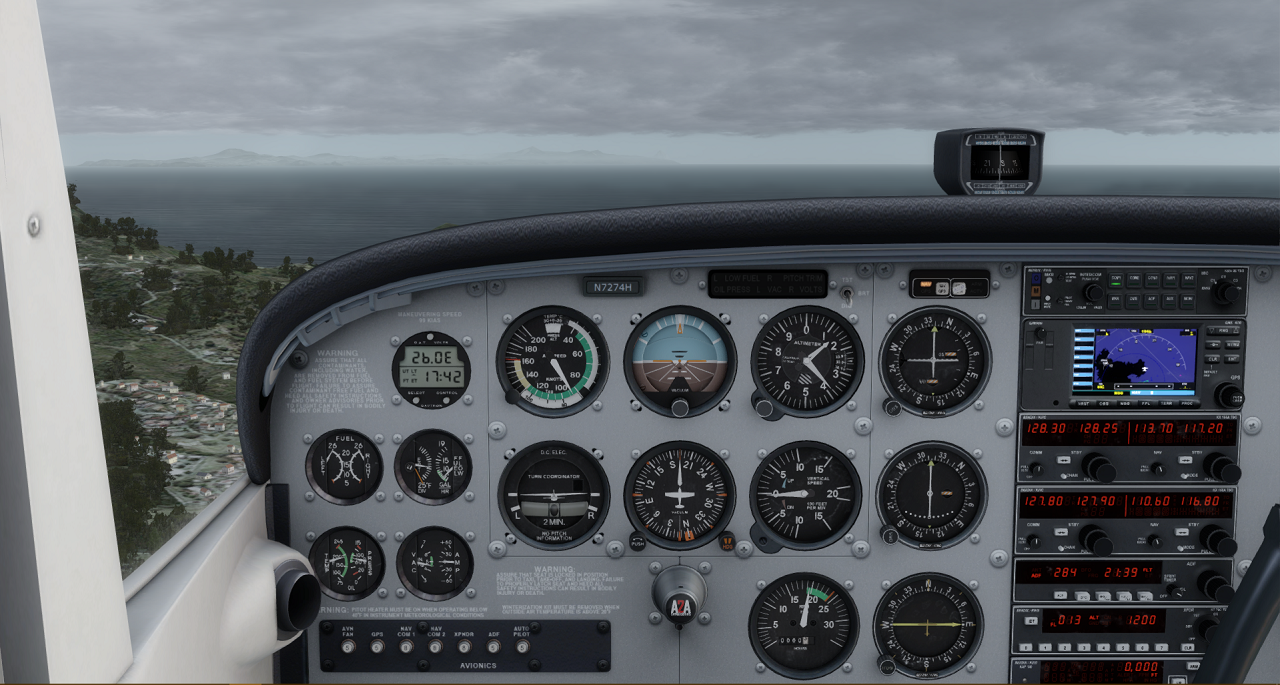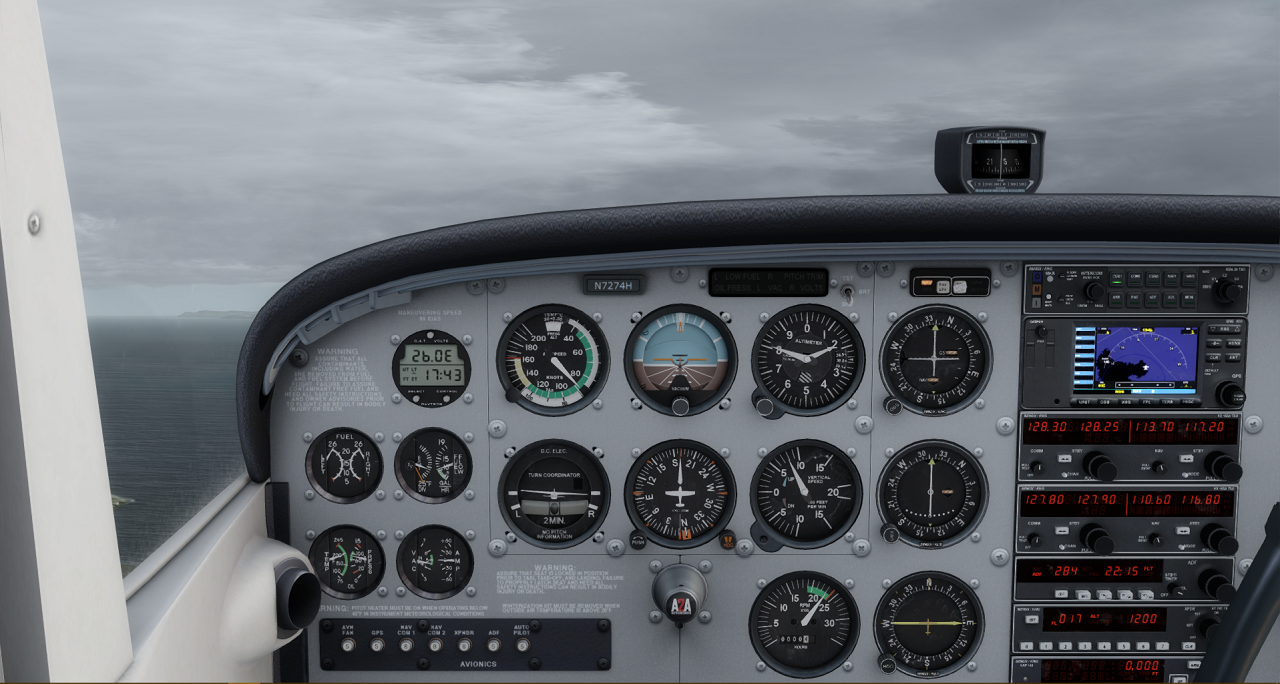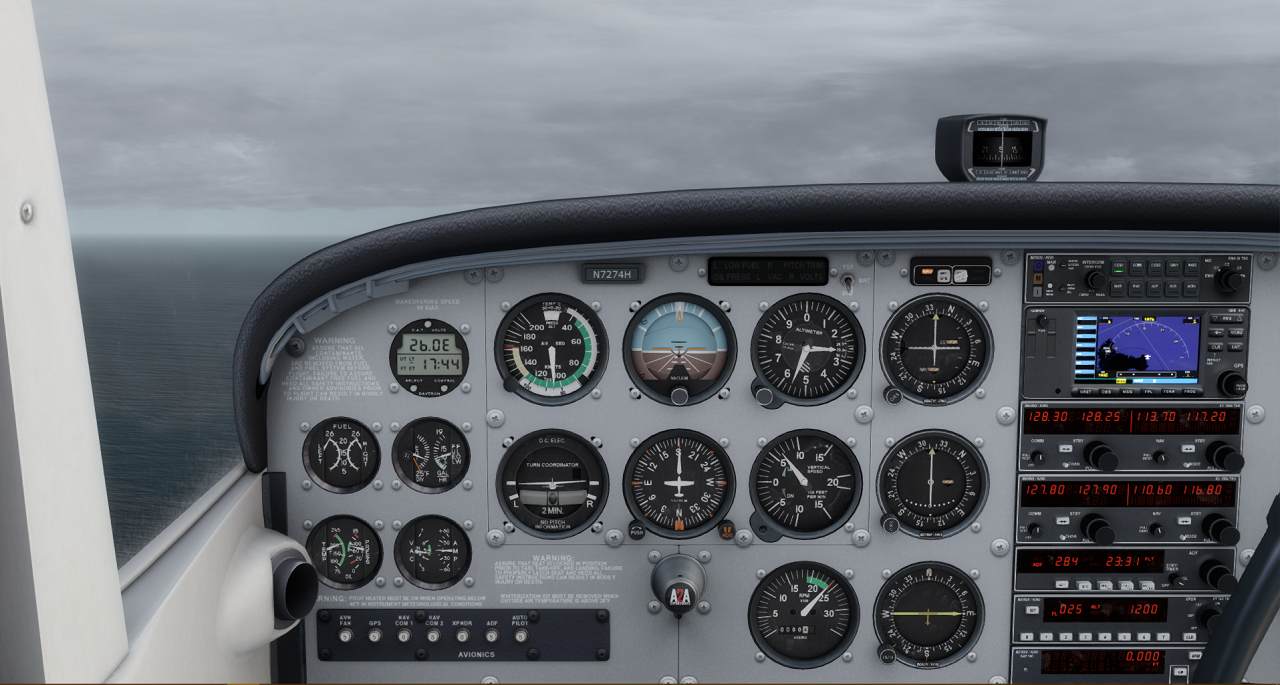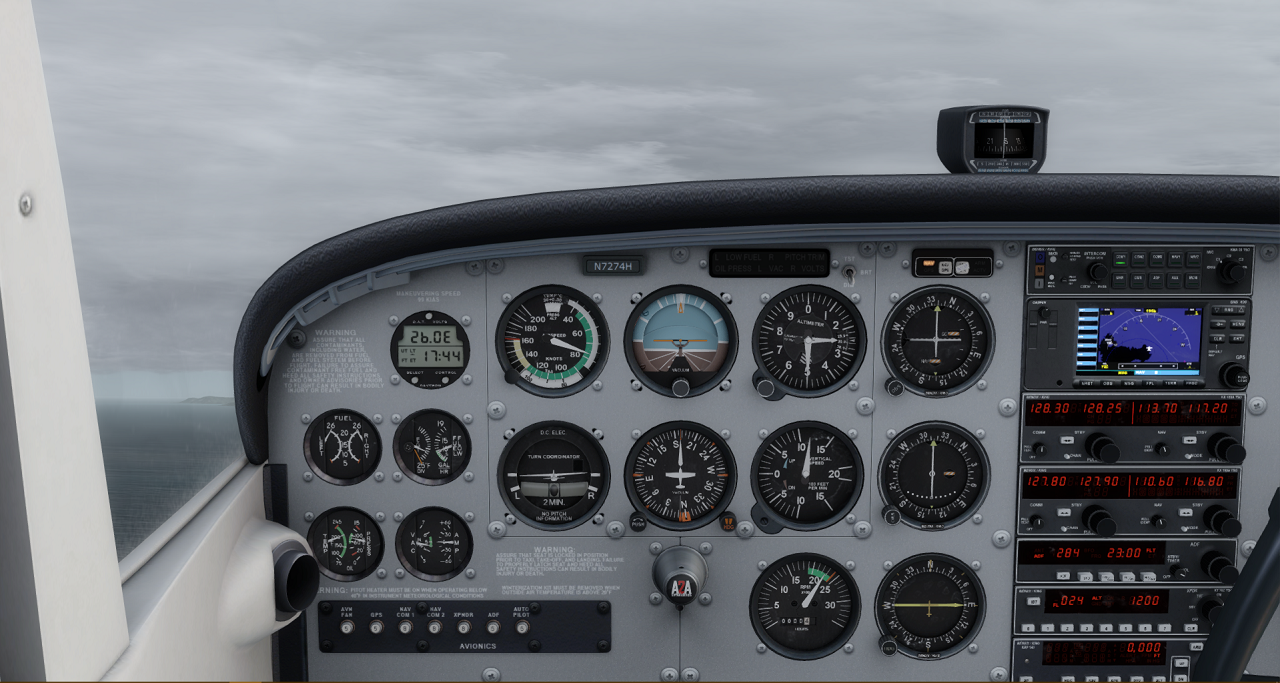¶ Theoretical Knowledge
An aircraft is made to climb at a specific airspeed while maintaining a defined climb power.
The pilot will only modify the pitch angle to maintain the right airspeed.
To modify the airspeed by only adjusting our pitch, we will follow this simple rule:
the higher the pitch angle, the lower the airspeed is.
Therefore, if we want to:
- accelerate, we will reduce our pitch angle by pushing on the flight controls
- decelerate, we will increase our pitch angle by pulling on the flight controls
Remember to apply small corrections, degree per degree and to trim your aircraft!
Caution: a major risk is to not pay enough attention to airspeed and let it decrease past the stall speed.
On our Cessna, we will climb using the following parameters:
- Target airspeed: 90 knots.
- Climb power: 2400 RPM.
- Target pitch angle: approximately +8°
¶ Practical usage
¶ Standard climb
To establish a standard climb, it is important to apply pitch and power change (2400 rpm) simultaneously.
Failure to increase power will result in a rapid decrease in aircraft speed which may lead to stall.
Our aircraft is in level flight, at 90 knots, and we want to initiate a climb.

Gently, simultaneously, pull your flight control to order a pitch up attitude and increase power to climb power. Target a pitch angle around +7°. Trim your aircraft accordingly and only adjust power.

Adjust the pitch angle so you can maintain 90 knots.
Remember to check the airspeed regularly.
¶ Correction of deviations
¶ Too low pitch
If we have not raised the nose of our aircraft enough , and the power is set to the climb power, the aircraft will accelerate past the climb speed and your climb will be longer to achieve.

¶ Too high pitch
If we have raised the nose of our aircraft too much, the aircraft will decelerate and speed may reduce past the stall speed.

This is potentially a very hazardous situation that must be corrected without delay.
- None
- VID 200696 - Creation
- VID 496402 - Wiki.js integration